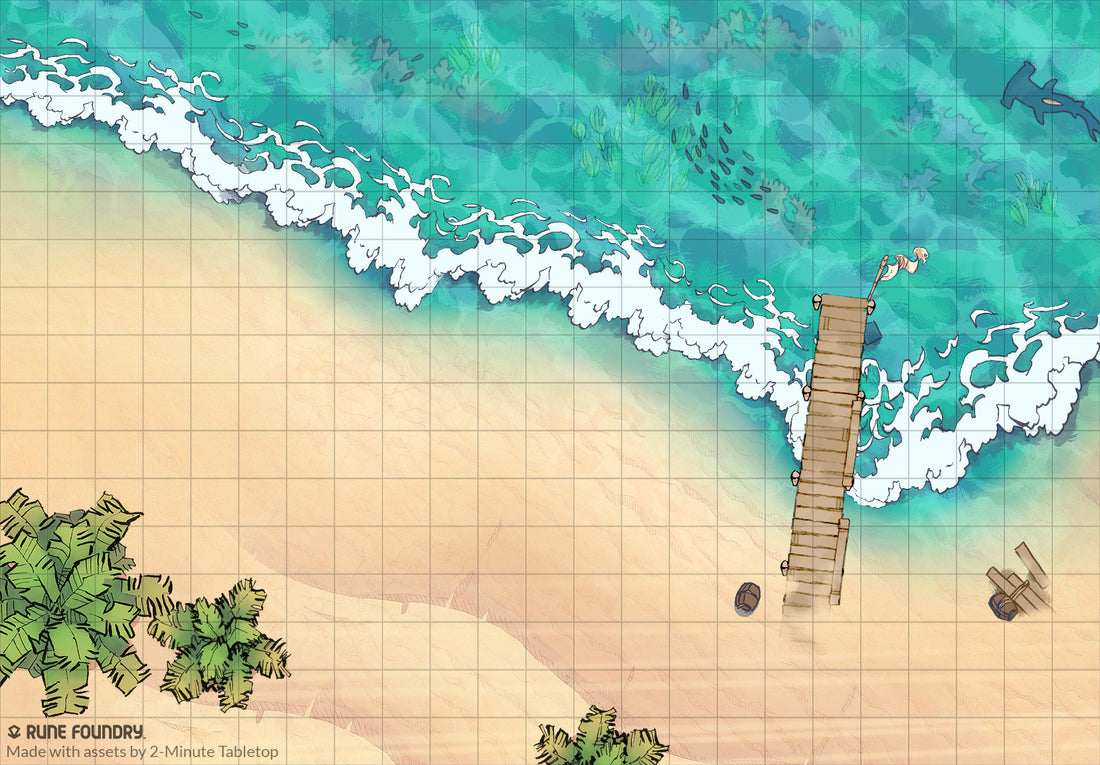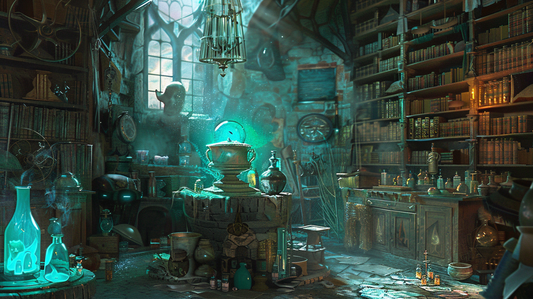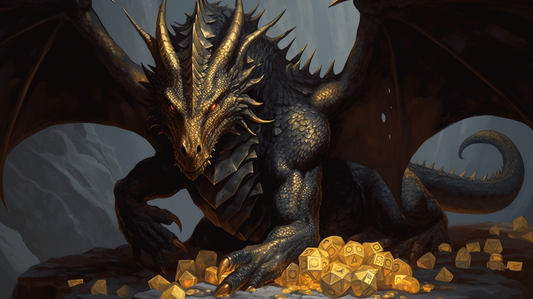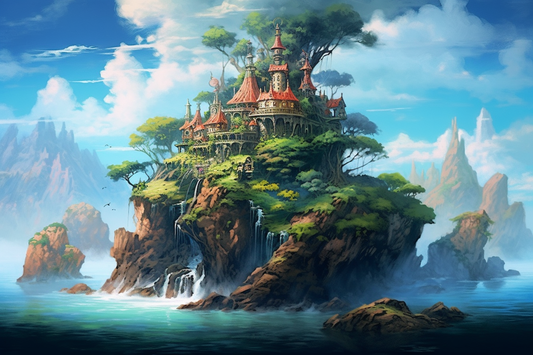
9 Tips for Using Battle Maps in Dungeons & Dragons 5e
Andrew ToddShare
Battle and dungeon maps for Dungeons & Dragons (DnD) or other popular tabletop roleplaying games can be a great asset for your adventures. Exploration and combat will both be more exciting for players as you use DnD maps effectively. Whether you are using printable maps or digital maps, these tips will help you get the most out of your next session!
We'll explain the following tips for how to use battle maps below:
- Find the right map
- Don't reveal everything right away
- Hide treasure
- Use objects for cover
- Plan encounters
- Use the landscape
- Don't force boundaries
- Using digital platforms
- Play with miniatures
1. Find the right map
Consider first your adventure setting and then how you will be displaying the map. The environment of your adventure setting might be a frozen tundra or a mysterious cave. Find a map that fits what you’re imagining, but be flexible in case it’s not perfect with what you had in mind. You might even be further inspired by the various free battle maps others have created!
How you plan to use the map is important for finding the right files. Some DnD 5e maps are optimized for digital use or print use. You can search for files that work well with your virtual tabletop (VTT) of choice. We’ll talk more about these later.
2. Don’t reveal everything right away
Maps for Dungeons & Dragons or other TTRPGs are best used to invoke curiosity. You may want to cover everything on a dungeon map if it is dark inside or rooms are hidden around hallways waiting to be explored.
By leaving some mystery, you’re creating fun opportunities for your adventurers to explore. A hidden room might be full of flesh-eating zombies, waiting to be released! Another room might contain helpful items to aid players on their quest.
3. Hide treasure
Treasure can mean a lot of things in a tabletop roleplaying game like Dungeons & Dragons. Gold is a common reward for exploration or completing quests, but a map might also hide magical items or new adventuring gear.
Hide treasure in larger objects that can be searched like chests or wardrobes. Hint at what objects might be searched in a room by mentioning them in your descriptions.
4. Use objects for cover
Look at the map to see if any opportunities for cover already exist, like large boulders or wide pillars. Otherwise, you may want to add in some to increase options during combat.
Combat on a DnD battle map is even more fun when you feel like the environment can be used to your advantage. And by “you”, we mean either the Dungeon Master or the players. Don’t forget that enemies should reap the benefits of cover as well!
5. Plan encounters
Most battle maps will include a grid so that you can measure distances. Typically, each square in a grid represents five feet squared. Use this to plan when and where enemies should appear on a map. Do you want an up close and personal surprise? Or a longer approach from an onslaught of numerous enemies?
You might have other types of social encounters or puzzles within an environment. Plan where those may each take place on a DnD map, but don’t overstuff the map. You want players to be challenged, but likely not overwhelmed.
6. Use the landscape
Think about any environmental challenges your setting might have. Would players slip on ice or risk falling from heights? Memorable moments can come from forcing players to problem solve these types of challenges.
7. Don’t force boundaries
If a player or enemy steps off the map, it’s not a cliff edge spelling instant doom (or is it?). You can either improvise another piece to the map or simply return to theater of the mind for that individual. Players shouldn’t feel restricted to the boundaries of a map.
Simply start describing to each other what is happening off the map. Flexibility is key to a successful roleplaying game.
8. Using digital platforms
Digital platforms for maps usually mean online virtual tabletops like Roll20 or Foundry VTT. VTTs can be free or offer premium paid features. Most will allow you to upload a map file as an image, then add tokens to represent players and NPCs.
You can display a VTT on a single TV or monitor if your group is in-person. Playing virtually is where virtual tabletops really shine though! You can give each player an invite link to allow them to join your game and interact with the same RPG map together. No more using long-distance travel as an excuse for not playing Dungeons & Dragons together!
9. Play with miniatures

Playing in person is more fun for many people. Print out your battle maps (or use a table with a built-in monitor) then add miniatures for even greater excitement! You can use Hero Forge to even create custom miniatures of characters. They are very useful for showing where a player is moving, but also incredibly cool to show off. You should look cool too though, so don't forget to check out Rune Foundry's t-shirts and DnD hoodies!
Bonus tip: when you're ready to take your maps to a whole other level, build terrain! Physical terrain and landscape modeling is impressive to look at and can increase the level of immersion a player feels while seeing their miniatures in a 3D space. Dwarven Forge sells pre-built terrain if you are nervous about crafting your own!
---
And that's our tips for getting the most out of maps for Dungeons & Dragons! We hope you've found this useful and take a moment to check out our free battle maps at Rune Foundry.
What other Dungeon Master tips would you like to know? What other tips have you found useful? Leave a comment below with your thoughts.




